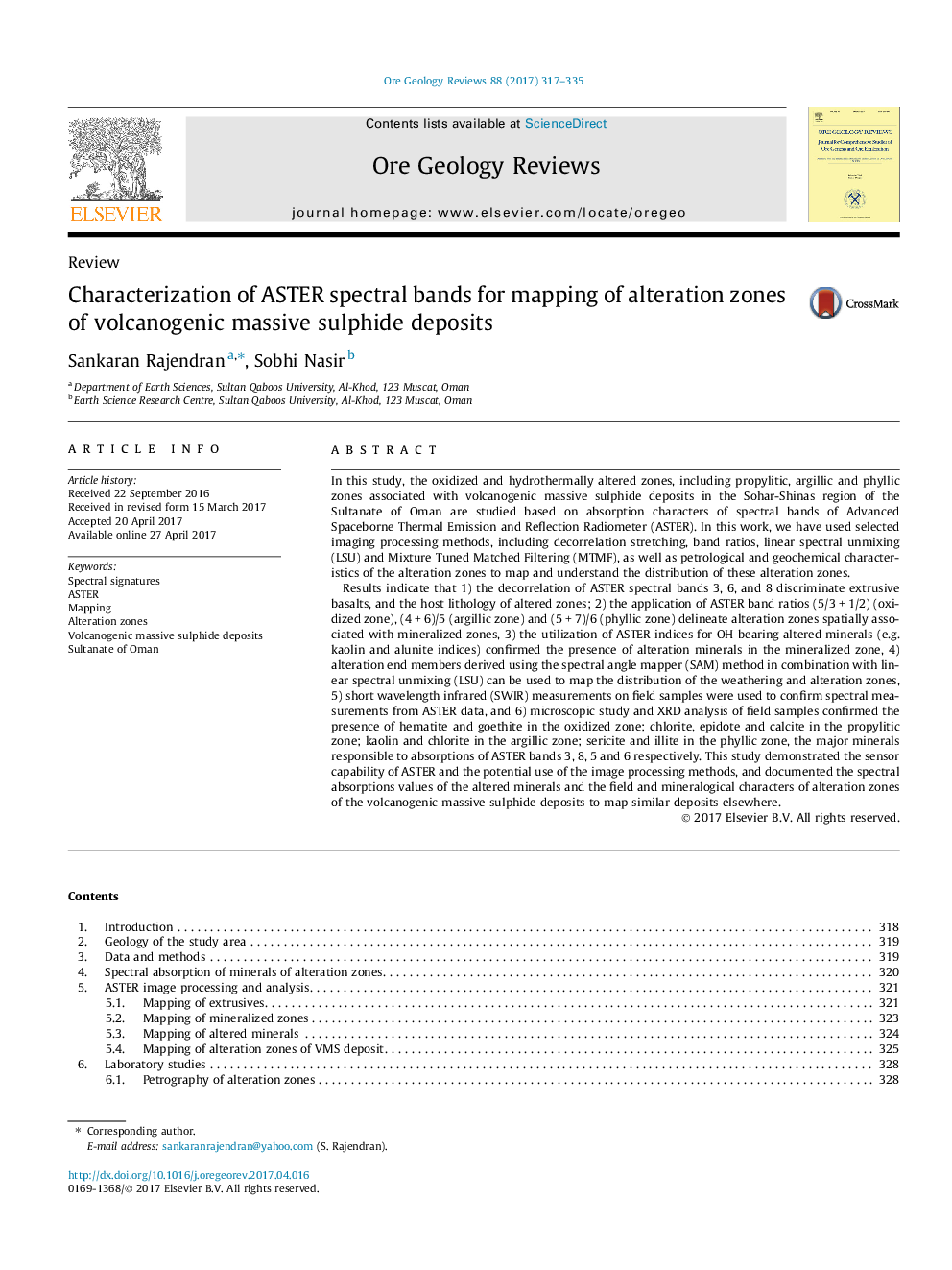| کد مقاله | کد نشریه | سال انتشار | مقاله انگلیسی | نسخه تمام متن |
|---|---|---|---|---|
| 5782341 | 1637219 | 2017 | 19 صفحه PDF | دانلود رایگان |

- Volcanogenic Massive Sulphide deposits of Oman are mapped using remote sensing technique.
- Occurrence and spatial distribution of alteration zones are discriminated by image processing methods.
- Spectroscopy data to characterize alteration zones are documented.
- Application of remote sensing is confirmed by filed and mineralogical studies.
In this study, the oxidized and hydrothermally altered zones, including propylitic, argillic and phyllic zones associated with volcanogenic massive sulphide deposits in the Sohar-Shinas region of the Sultanate of Oman are studied based on absorption characters of spectral bands of Advanced Spaceborne Thermal Emission and Reflection Radiometer (ASTER). In this work, we have used selected imaging processing methods, including decorrelation stretching, band ratios, linear spectral unmixing (LSU) and Mixture Tuned Matched Filtering (MTMF), as well as petrological and geochemical characteristics of the alteration zones to map and understand the distribution of these alteration zones.Results indicate that 1) the decorrelation of ASTER spectral bands 3, 6, and 8 discriminate extrusive basalts, and the host lithology of altered zones; 2) the application of ASTER band ratios (5/3Â +Â 1/2) (oxidized zone), (4Â +Â 6)/5 (argillic zone) and (5Â +Â 7)/6 (phyllic zone) delineate alteration zones spatially associated with mineralized zones, 3) the utilization of ASTER indices for OH bearing altered minerals (e.g. kaolin and alunite indices) confirmed the presence of alteration minerals in the mineralized zone, 4) alteration end members derived using the spectral angle mapper (SAM) method in combination with linear spectral unmixing (LSU) can be used to map the distribution of the weathering and alteration zones, 5) short wavelength infrared (SWIR) measurements on field samples were used to confirm spectral measurements from ASTER data, and 6) microscopic study and XRD analysis of field samples confirmed the presence of hematite and goethite in the oxidized zone; chlorite, epidote and calcite in the propylitic zone; kaolin and chlorite in the argillic zone; sericite and illite in the phyllic zone, the major minerals responsible to absorptions of ASTER bands 3, 8, 5 and 6 respectively. This study demonstrated the sensor capability of ASTER and the potential use of the image processing methods, and documented the spectral absorptions values of the altered minerals and the field and mineralogical characters of alteration zones of the volcanogenic massive sulphide deposits to map similar deposits elsewhere.
132
Journal: Ore Geology Reviews - Volume 88, August 2017, Pages 317-335